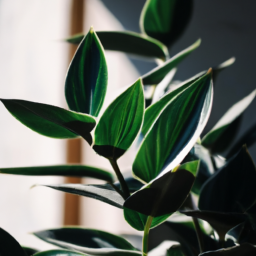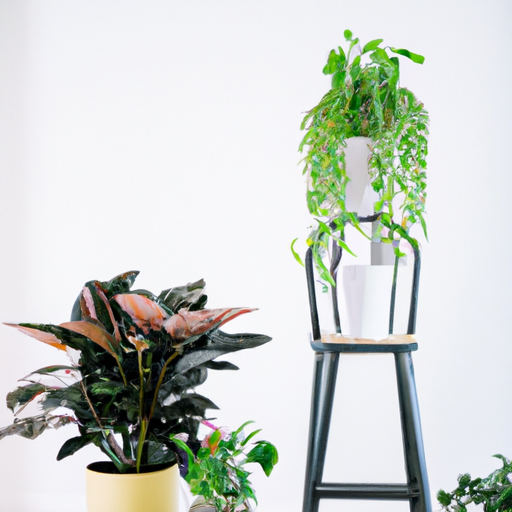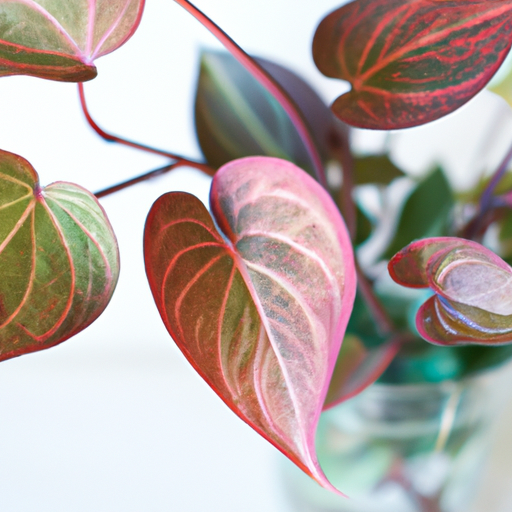
Are you looking to add a touch of greenery to your home with a big houseplant? Big houseplants have become increasingly popular in interior design, adding a statement piece to any room. Whether you’re a seasoned plant parent or just starting out, incorporating a big houseplant into your space can bring life and freshness to your home. In this blog post, we’ll explore the benefits of having a big houseplant, different types of big houseplants to consider, and tips for caring for your new leafy friend. So, grab your watering can and let’s dive into the world of big houseplants!
Benefits of Having a Big Houseplant in Your Home
Houseplants have become increasingly popular in recent years, and for good reason. Not only do they add a touch of nature to your indoor space, but they also offer a wide range of benefits for your health and well-being. In this article, we will explore the advantages of having a big houseplant in your home.
Improved Air Quality
One of the most significant benefits of having a big houseplant in your home is improved air quality. Houseplants are natural air purifiers, absorbing carbon dioxide and releasing oxygen through photosynthesis. They also help remove toxins such as formaldehyde, benzene, and trichloroethylene from the air, which can be emitted by household items like furniture, carpets, and cleaning products.
Studies have shown that having houseplants indoors can reduce indoor air pollution and create a healthier living environment. Plants like the peace lily, spider plant, and snake plant are known for their air-purifying properties and are excellent choices for improving the air quality in your home.
In addition to purifying the air, houseplants can also increase humidity levels in your home, which can be beneficial for respiratory health, especially during the dry winter months. By releasing moisture through a process called transpiration, houseplants can help alleviate symptoms of dry skin, coughing, and sore throats.
Enhanced Mental Well-being
Having a big houseplant in your home can also have a positive impact on your mental well-being. Studies have shown that being around plants can help reduce stress, anxiety, and depression. The presence of greenery indoors has a calming effect on the mind and can promote feelings of relaxation and tranquility.
Caring for a houseplant can also provide a sense of purpose and accomplishment, as you watch your plant grow and thrive under your care. The act of nurturing a living thing can be therapeutic and rewarding, helping to improve your mood and overall sense of happiness.
In addition, houseplants can help boost creativity and productivity. Having greenery in your workspace or living area can stimulate your mind and inspire new ideas. Studies have shown that employees working in offices with plants are more productive and have higher job satisfaction compared to those in plant-free environments.
Physical Health Benefits
In addition to improving air quality and mental well-being, having a big houseplant in your home can also offer physical health benefits. Indoor plants have been shown to help reduce symptoms of allergies and asthma by filtering out airborne allergens and pollutants.
Plants can also help regulate indoor temperatures by providing shade and releasing moisture into the air through transpiration. This natural cooling effect can help lower energy costs and create a more comfortable living environment during hot summer months.
Furthermore, studies have shown that having houseplants in hospitals can help speed up recovery times for patients and reduce the need for pain medication. The presence of plants can promote healing and create a more soothing and healing environment for patients to recover in.

Top Big Houseplants for Indoor Spaces
Introduction
Welcome to our guide on the top big houseplants for indoor spaces! If you’re looking to add some greenery to your home and make a statement with large, beautiful plants, you’ve come to the right place. In this article, we will explore some of the best big houseplants that are perfect for indoor environments.
Benefits of Big Houseplants
Big houseplants not only add a touch of nature and beauty to your indoor spaces, but they also offer a range of benefits for your health and well-being. These large plants help purify the air by removing toxins and releasing oxygen, creating a healthier environment for you to live in. They can also help reduce stress, improve mood, and increase productivity. In addition, big houseplants can act as natural humidifiers, helping to keep the air in your home moist during dry winter months.
Another benefit of big houseplants is their ability to make a statement and enhance the aesthetic appeal of your space. These plants can serve as focal points in a room, adding a touch of drama and elegance to your decor. Whether you have a spacious living room, a bright sunny corner, or a large empty wall that needs some greenery, big houseplants can help fill the space and create a welcoming and relaxing atmosphere.
Now that you know the benefits of big houseplants, let’s explore some of the top options that you can consider for your indoor spaces.
Fiddle Leaf Fig
Overview
The Fiddle Leaf Fig, also known as Ficus lyrata, is a popular choice for big houseplants due to its large, glossy leaves and striking appearance. This plant can grow up to 6 feet tall indoors, making it a great choice for adding height and drama to your space. The Fiddle Leaf Fig thrives in bright, indirect light and prefers to be watered when the top inch of soil is dry.
To care for your Fiddle Leaf Fig, make sure to dust its leaves regularly to keep them clean and allow for better light absorption. You can also mist the leaves occasionally to increase humidity around the plant. Avoid overwatering the Fiddle Leaf Fig, as this can lead to root rot. With proper care, this big houseplant can become a stunning focal point in your home.
In addition to its aesthetic appeal, the Fiddle Leaf Fig is known for its air-purifying qualities, helping to remove toxins from the air and create a healthier indoor environment for you and your family.
Monstera Deliciosa
The Monstera Deliciosa, also known as the Swiss Cheese Plant, is another popular choice for big houseplants. This plant features large, glossy leaves with unique splits and holes, giving it a tropical and exotic look. The Monstera Deliciosa can grow up to 8 feet tall indoors, making it a great statement piece for any room.
To care for your Monstera Deliciosa, place it in bright, indirect light and water it when the top inch of soil is dry. This plant thrives in humid environments, so misting its leaves regularly or placing a humidifier nearby can help it thrive. The Monstera Deliciosa is a low-maintenance plant that can add a touch of jungle vibes to your indoor space.
In addition to its striking appearance, the Monstera Deliciosa is known for its air-purifying properties, helping to remove harmful toxins from the air and improve air quality in your home.
Bird of Paradise
The Bird of Paradise, also known as Strelitzia, is a stunning big houseplant with large, banana-like leaves and vibrant orange and blue flowers. This plant can grow up to 6 feet tall indoors, adding a touch of tropical elegance to your space. The Bird of Paradise thrives in bright, indirect light and prefers to be watered when the top inch of soil is dry.
To care for your Bird of Paradise, make sure to place it in a sunny spot where it can receive plenty of light. Water the plant regularly, but allow the soil to dry out slightly between waterings to prevent root rot. The Bird of Paradise is a low-maintenance plant that can bring a touch of exotic beauty to your indoor environment.
In addition to its beauty, the Bird of Paradise is known for its air-purifying qualities, helping to remove toxins from the air and create a healthier living space for you and your family.

Introduction
Big houseplants can add a touch of nature and beauty to any home, but they require proper care and maintenance to thrive. In this guide, we will discuss the essential steps you need to take to ensure your big houseplant stays healthy and vibrant.
Choosing the Right Location
When it comes to caring for a big houseplant, the first step is to choose the right location. Most big houseplants require bright, indirect sunlight to thrive. Avoid placing your plant in direct sunlight, as this can scorch the leaves. If your plant starts to show signs of sunburn, such as brown spots on the leaves, move it to a shadier spot.
In addition to light, you also need to consider the temperature and humidity levels in your home. Big houseplants generally prefer temperatures between 65-75 degrees Fahrenheit and humidity levels of 50-60%. To increase humidity, you can mist your plant with water or place a humidifier nearby.
Lastly, make sure your big houseplant has enough space to grow. Choose a pot that is at least 2-3 inches larger in diameter than the plant’s current pot to allow room for root growth.
Watering and Feeding
Proper watering is crucial for the health of your big houseplant. Overwatering can lead to root rot, while underwatering can cause the plant to wilt and die. The key is to water your plant when the top inch of soil feels dry to the touch. Use room temperature water and water until it drains out of the bottom of the pot.
In addition to water, big houseplants also need to be fed regularly. Use a balanced liquid fertilizer once a month during the growing season (spring and summer) to provide essential nutrients for growth. Be sure to follow the instructions on the fertilizer package to avoid overfeeding.
If your big houseplant starts to show signs of nutrient deficiency, such as yellowing leaves or stunted growth, consider repotting it in fresh, nutrient-rich soil.
Pruning and Maintenance
To keep your big houseplant looking its best, regular pruning is essential. Remove any dead or yellowing leaves to encourage new growth and prevent the spread of disease. You can also trim back overgrown branches to maintain a compact and bushy shape.
In addition to pruning, it’s important to keep an eye out for pests and diseases. Common pests that can affect big houseplants include spider mites, aphids, and mealybugs. If you notice any signs of infestation, such as webbing or sticky residue on the leaves, treat your plant with an organic insecticide or insecticidal soap.
Lastly, dust the leaves of your big houseplant regularly to allow for proper air circulation and photosynthesis. You can gently wipe the leaves with a damp cloth or give them a shower under lukewarm water to remove any dust buildup.
Here’s what we learned
So you’ve decided to bring a big houseplant into your home – congratulations! Big houseplants can make a bold statement and add a touch of nature to any room. Whether you’re looking for a statement piece or just want to fill an empty corner, a big houseplant can be the perfect solution.
When choosing a big houseplant, consider the size of your space and the amount of light it receives. Some popular options for big houseplants include fiddle leaf figs, rubber plants, and monstera deliciosas. These plants are not only beautiful but also relatively easy to care for, making them a great choice for beginners and experienced plant parents alike. Just remember to water them regularly, give them plenty of sunlight, and watch them thrive in your home!
Your Questions Answered. Comprehensive FAQ:
Q1: What are some popular big houseplants?
A1: Some popular big houseplants include the fiddle leaf fig, monstera deliciosa, rubber plant, and bird of paradise. These plants are known for their large, lush foliage and are perfect for adding a statement piece to any room.
Q2: How do I care for a big houseplant?
A2: Caring for a big houseplant involves providing it with the right amount of light, water, and nutrients. Make sure to place your plant in a spot with bright, indirect sunlight, water it regularly (but be careful not to overwater), and fertilize it every few months to keep it healthy and thriving.
Q3: Can big houseplants improve indoor air quality?
A3: Yes, big houseplants can help improve indoor air quality by absorbing toxins and releasing oxygen. Plants like the peace lily, snake plant, and spider plant are known for their air-purifying properties and can help create a healthier environment in your home.
Q4: How do I repot a big houseplant?
A4: When repotting a big houseplant, choose a pot that is one size larger than the current one to allow room for growth. Gently remove the plant from its current pot, loosen the roots, and place it in the new pot with fresh soil. Water the plant thoroughly after repotting to help it adjust to its new home.
Q5: Where can I buy big houseplants?
A5: Big houseplants can be purchased at local nurseries, garden centers, and online plant shops. You can also find a variety of big houseplants at home improvement stores and specialty plant shops. Be sure to check the plant’s size and care requirements before making a purchase to ensure it will thrive in your home.
Emily Bloomfield is an interior designer and horticulturist specializing in incorporating indoor plants into interior spaces. With a background in both design and plant science, Emily offers a unique perspective on creating harmonious living environments through the synergy of greenery and aesthetics. Her creative ideas and innovative solutions make her a sought-after authority in the field.


